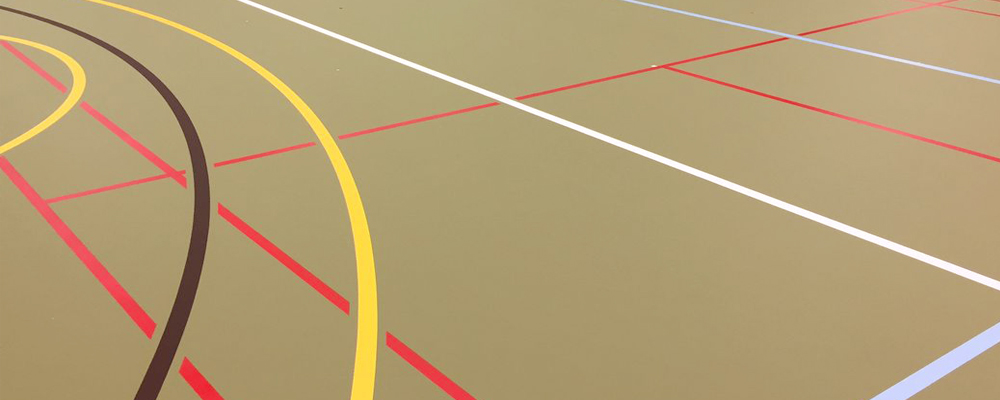
PVC in Sports
From sporting greatness to sustainable product
The London 2012 Games were billed to be the most sustainable Games ever. PVC fulfilled a number of important roles in the sporting stadia, as well as being used in sports equipment and accessories.
The athletes are home, the medals are put away, the crowds have gone, but many of the stadiums and infrastructure are now a permanent part of the London landscape.
More than 142,000 m² of PVC fabric alone was used in Olympic Park (now called Queen Elizabeth Park) and external sites. Infrastructure included PVC pipes and the insulation of electrical cables. Many of the more than 10,000 athletes that participated had PVC sportswear, shoes and sports bags; and PVC canopies, mats, padding and barriers protected both athletes and game spectators.
Reviewing the implementation of its PVC Policy applied to procurement and construction of the facilities, the Olympic Development Authority found that the functional properties of PVC made it the most appropriate material in certain circumstances, and sometimes for health and safety reasons, the only solution.
Innovative PVC
New and innovative applications of PVC were used in venues, equipment and accessories under carefully implemented policies for use, re-use and sustainable practices. Two such venues were the Velodrome and the Shooting Ranges.
The Velodrome was designed with the aim of creating the world’s fastest cycling track by tailoring the track geometry and setting the temperature and environmental conditions within the venue to create record-breaking conditions. To help achieve this, PVC-coated polyester mesh screen wrapped around the whole bowl, varying in height and gradient as it filled the void between the 6000 seats and the curved roof.
The fabric was stretched on a slope from the back edge of each rank of the upper tier seating up to the structural steel ring beam that supports the roof. The hyperbolic paraboloid-shaped building was designed to be lightweight and efficient to reflect the efficient design of a bicycle. The use of abundant daylight through strategically positioned roof lights aimed to reduce the need for artificial lighting, and natural ventilation was achieved through openings in the external timber cladding of the venue.
At the Shooting Ranges located at the famous Royal Artillery Barracks in Woolwich, around 18,000 square metres of PVC membranes were used, giving the enclosures a unique appearance. Vibrantly coloured openings that helped break-up the white facades created the tension, in addition to providing natural ventilation and light.
Recyclable, Reuseable PVC
After the London event, all temporary structures are being dismantled and recycled. A system of crushing, selective dissolving, fibre separation, PVC precipitation and solvent regeneration will ensure that the recycled PVC compound is of a high quality and can be reused with minimum impact on the environment.
Some of the recycled PVC from London 2012 was planned to be used in football stadiums in Brazil for the 2014 FIFA World Cup and the Rio de Janeiro 2016 Games continuing a sustainable product chain to the next great world sporting events.
| SITE | DURING LONDON 2012 GAMES | AFTER LONDON 2012 GAMES |
|---|---|---|
| Olympic Stadium | 25,500m² canopy of white PVC coated polyester fabric covering two-thirds of the spectator seating. The stadium received the Royal Institute of British Architects award as a structure making the greatest contribution to British architecture in the past year. | Stadium size will be reduced and serve as a venue for cultural, community and sporting events. |
| Basketball Arena | This temporary venue uses 20,000m² of recyclable white PVC membrane stretched over three arched panels. | After use during the Paralympics, the arena will be dismantled and the PVC with be re-used at other sporting events. |
| Water Polo Arena | Featuring silver wrap and roof made of inflated PVC cushions for extra insulation and to prevent condensation. | This temporary stadium will be taken down and reassembled elsewhere in the UK. |
| Velodrome | PVC coated polyester mesh screen fabric around the whole bowl. 2,600m² of PVC in high performance surface. | The venue will become a community facility after the Games. |
| Olympic Shooting Gallery | Structure clad with 18,000m2 of PVC membrane. | All materials will be re-used and recycled, the structures to be utilized for the 2014 Commonwealth Games in Glasgow, Scotland. |
| Aquatics Centre | 19,000 m² of PVC for a wave-like roof over the interior stands. | Following the Olympics, two temporary wings using PVC will be removed and recycled, the facility will then be open to the local community, clubs and schools. |
| Eton Manor | 7,200 m²of PVC membrane covering training pools for aquatic events and hosting wheelchair tennis. | It will house the Olympic Hockey Centre. |
The following animated video from the British Plastics Federation's Vinyls Group explains the use of PVC products in the construction of sporting venues, as well as the diverse range of PVC product applications for performance sports surfaces, sports equipment and clothing.
http://youtu.be/WGNAc5dcX0w






